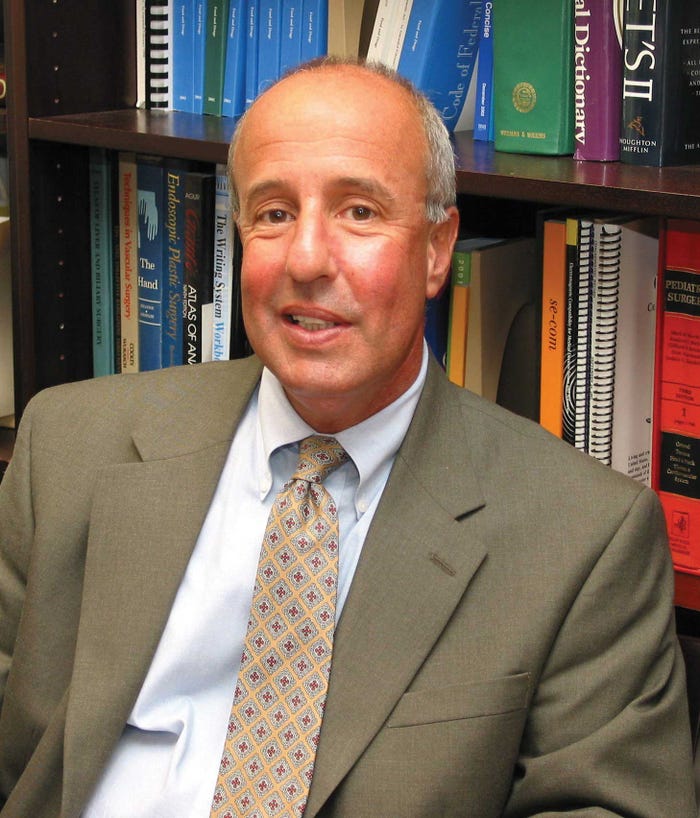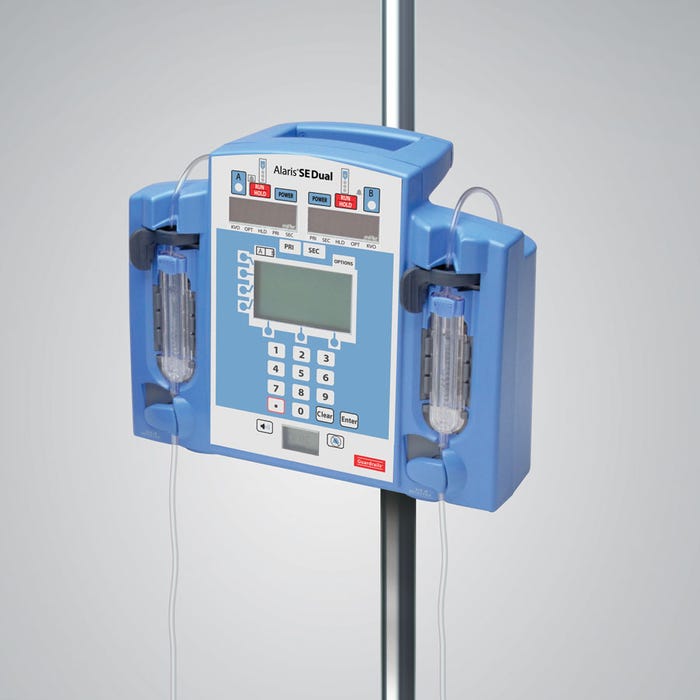A year after trumpeted change arrived with the Obama administration at FDA, an ideological battle brews ahead of the midterm elections about where the agency should be headed. Should it hold the status quo or crack down on industry?
March 1, 2010
Proindustry, antigovernment commentators like the Hoover Institute’s former FDA manager Henry I. Miller and others at the Wall Street Journal see much to be alarmed about and industry leaders have been making cautionary statements. It’s a false battle, borne of nervous reactions to early public statements from the new leadership about ratcheting up enforcement and reforming the 510(k) review process. Yes, there have been signs of unaccustomed vigor in enforcement, but who can say that any of those result from the new regime’s agenda?
The truly important determining factor at FDA is less political appointees who come and go, and more the culture of its underlying workforce. While under a vigorously proindustry political regime, FDA staff proceeded with its persecution of small, politically uninvolved companies such as Utah Medical Products, TMJ Implants, and Shelhigh.
Indeed, it has long been observed that political appointees such as commissioners and their recruits make little, if any, difference in the agency’s day-to-day regulatory work below. Such leaders are mainly ambassadors who quickly get captured by the existing culture of the agencies they’re sent in to tame. The undiscussed truth is that the Obama team at FDA, like so many of its predecessors, is dealing with a workforce whose culture has become progressively more proindustry since the Ronald Reagan era erupted on the scene with its mission of getting “government off the backs of the people.”
As a consequence, the regulatory culture deep inside FDA now continues to be far more proindustry than it has been at any time since my close-up observations began in 1975. Few today remember the battles industry waged against strident, demanding review leaders whose common goal seemed to be to delay new products and impose new manufacturing impediments. Nancy L. Buc, chief counsel during the Carter administration, frequently extolled the virtues of the “healthy tension” that was supposed to exist in the arm’s-length relationship between regulator and regulated.
Since leaders during the Reagan era started dissolving that arm’s-length posture, the ingrown skepticism—even occasional hostility—with which key staff regarded industry has progressively eroded. Appointees such as Reagan-era deputy commissioner John Norris made it respectable to publicly visit and bestow fulsome praise on worthy companies, such as the then-much-favored Merck. His boss, former commissioner Frank E. Young, minted personal FDA bronze medals of appreciation that he passed out at industry events.
This wasn’t just high-level window dressing, however. Lower-level staff migrations began between industry and FDA, ending the prior policy of keeping industry personnel remote from agency employment opportunities. The Center for Veterinary Medicine’s director of compliance came directly from regulated industry, as did bench scientists and product reviewers. FDA staffers had long been recruited by industry, just as they are today, but the flow wasn’t supposed to go the other way.
President George H.W. Bush’s vice president, Dan Quayle, launched a government efficiency program to make FDA and other agencies operate more like businesses. He diverted many senior careerists to indoctrination sessions and implanted political appointees to make sure the touted reforms were put into action.
The Clinton administration encouraged continuation of these collaborative trends. These trends accelerated under user fee legislation, which for the first time truly made the agency financially beholden to the very companies it was regulating. User fees became a powerful attitude-changer among agency managers. FDA old-timers at all levels had openly opposed user fees for years. They clung to the vanishing arm’s-length ethic that aimed to prevent any coziness from developing between the regulator and regulated.
Such coziness thrived during the George W. Bush years, when FDA managers indoctrinated subordinates to treat industry sponsors as if they were the agency’s clients. These sponsors were also treated as partners in a mission to improve public health through rapid product approvals—notwithstanding critics’ observations that most of those speedy approvals involved products that were only minor improvements or me-toos. The alleged coziness led to a public revolt by nine CDRH staffers as the White House changed hands and, later, to promised internal reforms. Obtaining information about these agency-industry relationships and other events at FDA has been hampered by an unwritten policy at all federal agencies restricting news media access to government employees.
Proindustry FDA culture is firmly entrenched. Not only is collaboration in product reviews officially encouraged, but good relationships across the regulatory fence hold the prospect of a possible future career in a well-paid industry job—a connection that is less likely to be highlighted by news media that now have to line up for information that has been filtered through agency press offices.
|
Arvin Shroff says that the user fee era at FDA has given industry the upper hand in its interactions with the agency. |
New top-down efforts by the Obama administration to change the culture to be more consumer-focused may take almost as long to bear real fruit as the proindustry culture took to reach its current status. Employees’ attitudes are that hard to change. Some reputedly antiindustry political appointees have duly arrived, but history says that their impact in the trenches will be minimal.
As former FDA Office of Enforcement director Arvin Shroff tells us, user fees at FDA are the primary villain, because they “allowed the industry to dictate the changes at FDA in programs, procedures, and practices. It will be impossible for the Obama administration to reverse the trend because as long as the user fees are in place, the industry has the upper hand.” Shroff also says that user fees and various Republican administrations have gutted the proconsumer culture at the FDA. According to Shroff, “The newer employees are not privy to the way FDA functioned prior to the user fee era. User fees are here to stay and as such, industry will always have a seat in the FDA boardroom.”
But even a flicker of a concession to the arm’s-length ethos at FDA will set off alarm bells in industries that have become used to getting what they want from the agency. Offense is said to be the best defense, so expect to see more of it from proindustry commentators as the midterm elections loom, bringing with them the hope of keeping FDA where it is for industry.
Daniel Schultz Finds New Home in Consultancy
Less than six months after he resigned from FDA under a barrage of complaints about corrupt medical device product reviews, former CDRH director Daniel Schultz has joined Greenleaf Health LLC, the regulatory consulting firm opened by former FDA chief of staff Patrick Ronan. The company says it provides “strategic guidance to companies regulated by FDA and companies developing innovative solutions to pressing public health challenges around the globe.”
|
Schultz has joined another battle-tested FDA veteran, Andrew von Eschenbach, as a consultant at Greenleaf Health. |
Schultz’s new position is senior vice president for medical devices and combination products. A Greenleaf news release says that he will “provide strategic consulting services and work with Greenleaf clients to bring innovative devices to patients.” Company CEO Patrick Ronan was quoted as saying that Schultz’s “addition to the firm sets Greenleaf apart with respect to depth of knowledge about FDA decision-making and critical public health and policy matters.” He is based in the firm’s expanded Washington, DC, headquarters. Already at Greenleaf as senior advisor is another agency alumnus, former FDA commissioner Andrew von Eschenbach.
Schultz announced last August that he and FDA commissioner Margaret Hamburg had agreed that his departure would be in the best interest of CDRH and FDA. This decision came four months after nine dissident center staff members asked Senator Charles Grassley (R–IA) to help end the “systemic corruption and wrongdoing that permeates all levels of FDA and has plagued the agency for too long.” That appeal came after the Obama administration transition team didn’t seem to want to look into CDRH’s troubled history of the last few years, saying it preferred to look “forward rather than backward.”
TMJ Implants Loses in Court Again
Embattled Colorado medical device maker TMJ Implants Inc. has lost its latest court effort to avoid imposition of $340,000 in FDA civil money penalties for not filing 17 disputed medical device reports. Three U.S. Tenth Circuit Court of Appeals judges denied a request by the company and its president, Robert W. Christensen, for en banc review of an earlier decision by three other circuit judges. In a one-page order, the appellate judges said that none of the 12 judges in circuit wanted to consider the case.
Christensen has previously said that he doesn’t have the money necessary to pay the penalties and may have to shut down the company.
Manufacture of Alaris SE Infusion Pumps Resumes
|
CareFusion says that it has taken the necessary steps to resume production of the Alaris pumps pictured here. Image courtesy of CAREFUSION |
FDA has given CareFusion (formerly a Cardinal Health unit) permission to resume manufacturing its Alaris SE line of infusion pumps. The company has been operating under a February 2007 consent decree with FDA. The decree included an injunction against manufacturing and selling Alaris pumps.
Company officials said that although the work under the consent decree is not finished, they have made efforts to improve the quality system and to take steps necessary to resume production, sale, and installation of the Alaris pumps.
The decree followed seizure of $1.8 million worth of Alaris Signature Edition Gold infusion pumps (model numbers 7130, 7131, 7230, and 7231) due to a design defect called “key bounce,” which could cause potential drug overinfusion. “This seizure was intended to ensure that infusion pumps located at Alaris’s manufacturing facility are not distributed unless the problem is corrected,” FDA said at the time. Previous agency inspections had found that Cardinal failed to follow GMPs. A key bounce occurs when the pump registers a command twice even though the operator only pressed a command key once. “If a key bounce occurs and is not detected during programming verification, it may result in an infusion rate at least 10 times the intended infusion rate,” the agency said.
Under the decree, Cardinal was be required to submit a plan to FDA outlining corrections for the Alaris SE pumps then in use by customers, submit a remediation plan for all seized pumps, and hire an independent expert to inspect and certify pump manufacturing facilities.
FDA, Industry Address Pacemaker RFID Interference
|
FDA and industry say that RFID developers should keep implantable pacemaker and ICD electromagnetic compatibility in mind. Image by iSTOCKPHOTO |
Although there is evidence for concern about electromagnetic interference in certain cardiac devices from some radio-frequency identification (RFID) readers, FDA has not received any incident reports of pacemaker or implantable cardioverter-defibrillator (ICD) interference caused by any RFID system. “We do not believe the current situation reveals an urgent public health risk,” researchers from FDA and several pacemaker and ICD companies say in the January 10 issue of Heart Rhythm.
The researchers don’t see a present public health risk, but they recognize that use of RFID technology will only increase. They suggest that companies developing RFID technology be aware that the readers can be a near-perfect source of electromagnetic interference for pacemakers and ICDs.
“An important message from the results of this study should be that RFID implementation should take implantable pacemaker and ICD electromagnetic compatibility into consideration,” they write. Additionally, the researchers say that both patients and cardiologists should be aware of the potential adverse reactions from RFID. “We are concerned that the continued proliferation of RFID without taking implantable pacemaker and ICD electromagnetic compatibility into consideration could potentially cause clinically significant events for patients.”
FDA Schedules Public Meeting on Glucose Monitors
FDA will hold a public meeting in March to resolve more than a decade’s disquiet over the accuracy of blood glucose monitors used to manage diabetes. Titled “Clinical Accuracy Requirements for Point-of-Care Blood Glucose Meters,” the workshop includes three sessions: clinical accuracy for blood glucose meters, tight glycemic control in clinical settings, and medications and other substances that interfere with the technologies the devices employ.
Blood glucose meters, the agency said, are being used in clinical settings and at home in ways that are not within the intended use of the devices as evaluated by FDA. For example, glucose meters are increasingly being used to achieve tight glycemic control despite the fact that these devices have not been cleared for this use.
“There is no consensus that blood glucose meters currently on the market are accurate enough to be used in this way,” FDA said. Others believe the current analytical performance of glucose meters is adequate and that there is no evidence to support the need for higher standards,” the agency said.
About the Author(s)
You May Also Like






